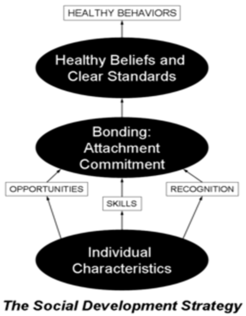Project Title: Urban Partnership of Miami-Dade County Coalition – Drug Free Community Coalition
Brief Program/Service Summary
UPMDC is collaboration between Justice & Security Strategies, Dade Family Counseling Community Mental Health Center, The Miami Coalition and Hosanna Community Foundation, Inc. who have organized a care coordination pathway based upon best practices resulting in a seamless system of care that increases connections across service systems. UPMDC is a multi-disciplinary collaboration with a long history of serving the targeted community, including children with disabilities (CWDs) and their families. UPMDC employs an innovative model of community mobilization and long term community engagement activities that yields outcomes related to reducing substance abuse, child maltreatment, mental health crises, youth/family/community violence, to include promoting academic achievement and environmental strategies that improved community safety.
 The agency’s vision is to provide safe places of learning that give hope and serve as pathways to success for program participants. Through diverse activities UPMDC aims to reassert in the community’s youth a sense of hope in the future through positive youth and adult relationships and alliances that assist them in navigating the maze of adolescence and achieving a productive adult lifestyle.
The agency’s vision is to provide safe places of learning that give hope and serve as pathways to success for program participants. Through diverse activities UPMDC aims to reassert in the community’s youth a sense of hope in the future through positive youth and adult relationships and alliances that assist them in navigating the maze of adolescence and achieving a productive adult lifestyle.
UPMDC realizes the needs of the community served are larger than their agency capacity and thus works to develop strategies to prevent substance abuse, educational failures, criminal and violence acts that seem to perpetuate among young people by creating a safer community. The creation of a safer community has its roots in prevention activities through a network of service providers align in purpose and core programming to include well thought out environmental strategies to increase the protective factors in the life of community youth. This “community driven” effort is realized as the Urban Partnership of Miami-Dade County Coalition (UPMDCC).
Drawing upon the experience of the Harlem Children’s Zone, the UPMDCC recognized the merit of using a holistic approach and adopted a cradle to college philosophy. Members of the UPMDCC recognized the importance of addressing the community’s youth substance abuse, low academic performance and high frequency to include youth gun related violence issues and initiated action to conduct a readiness assessment during the Partnership meeting in late 2013. Members began a strategic planning process immediately thereafter to develop coalition direction and capacity.
During this phase the Coalition held semi-monthly meetings and focused on strategic planning. The Coalition began with brainstorming community conditions that were barriers to successful youth outcomes. The Coalition conducted a neighborhood door-to-door survey to obtain feedback from parents, and held monthly Friday night meetings to engage parents and caretakers. The Coalition sought resources through grants to establish neighborhood safe havens for youth most at risk. While researching youth violence issues in the community in response to a local grant opportunity with The Children’s Trust, a dedicated funding source for children’s services established by voter referendum in 1998, Coalition members gathered data that pointed in the direction of youth substance use as an underlying factor to community violence. The UPMDCC discerned that prevalence was coupled bulling on social media, high rates of delinquency and poor school performance. The UPMDCC found the #1 drug of concern to be marijuana due to its prevalence and the ease with which youth can readily access it in school and community environments. Within the targeted jurisdiction, marijuana and alcohol usage, to include high rates of incarceration among adults and youth is considered social norms.
While the UPMDCC Coalition was not funded directly by The Children’s Trust, several Coalition members were subcontracted to provide services under the following grants:
- The Children’s Trust’s Youth Violence Initiative, which sought to stem violence associated with a rash of gun-related deaths of children and youths in the Brownsville/Model City, Miami Gardens and Liberty City communities;
- The Children’s Trust Place-Based Service Partnerships designed to foster social service partnerships in high-need communities throughout Miami-Dade County, with the goal of offering a coordinated network of services that utilize efficient delivery systems to help reduce frustration at the personal, institutional and community levels while contributing to the overall wellbeing of high-risk children, youth and families;
- Bureau of Justice Assistance Project Safe Neighborhood grant designed to create safer neighborhoods through a reduction in crime associated with gang and gun violence; and,
- Administration of Children and Families/Department of Health and Human Services Mentoring Children of Prisoners grant supporting the establishment and operation of programs using a network of public and private entities providing mentoring services to children of inmates.
Coalition Evolution: The coalition determined it would be helpful to follow the Community That Cares best practice approach and Strategic Prevention Framework to learn more about the problem; mobilize the community; develop and implement a strategic plan of action to do something about it; and evaluate results. Members realized that it would require sufficient dedicated resources to make a difference and, therefore, worked within the eligibility guidelines for the Drug-Free Communities program to strengthen its capacity to apply for funding in 2015. With the guidance of TMC, the UPMDCC began recruiting stakeholders from various community sectors to join the coalition and was funded by Drug-Free Communities Support Grant in September 2015.
UPMDCC programs will incorporate the social development strategy of risk and protective factors and the developmental asset theory to build youth resiliency.
The power of developmental assets and the relationship between assets and positive outcomes and lack of assets and negative outcomes has been documented across population sectors. Research shows that youth across ethnic groups, both sexes and communities of varying size, demonstrate on average only 20 of the 40 developmental assets available to foster their positive development.
The UPMDCC brings to the table a fierce commitment to accountability and the need of “doing it right”. The Partnership strives to be a model of harmonious, effective inner-city network working in collaboration to create community change that results in safer, drug-free and stronger environments for children and families. Its values are rooted in spirituality and faith in the inherent capacity of people to lead positive, productive lifestyles and give back to their community.
In addition to the Community that Cares and the Strategic Prevention Framework models, the Partnership model incorporates both, The Social Development Strategy of risk and protective factors and the 40 Developmental Assets framework to support program activities. These approaches are applied within the context of cultural sensitivity and competence. Developmental Assets and Social Development Strategy are two of the primary theories used in child development.
The Goal is:
- To develop a system of care that serves as a service network to facilitate positive youth development
- To develop environmental strategies that assists in the removal of barriers that hinder children in reaching their full potential.
- To develop coordinated and interdisciplinary service centers strategically located throughout the service area that combines education, social service and community building as core activities.
- To develop community education continuum that are supported through close coordination between educators, care givers and community supports.
- Community supports are interwoven where needed and guided by care coordinators who work with the family to identify and overcome barriers to providing a nurturing home environment in support of academic success.
- Volunteerism and community service are highly valued as community building tools.
- Door to door outreach is a key tool to engage parents and community.
- Caregivers/parents are equal partners in services and promoting educational values.
- Protocols and incentives reinforce the commitment to learning and successful outcomes.
- Services are culturally competent and child/family-centered.

The social development research conducted by J. David Hawkins, PhD, and Richard F. Catalano, PhD, has been the foundation of some of the most effective prevention strategies across the nation for the past twenty years. Children’s bonding with adults is the basis of the Social Development Model: Children who bond successfully in four social units, or realms, have the best opportunity to grow strong and healthy.
Bonding is defined as belief in and commitment to each of these realms:
- Family
- School
- Peer Group
- Community
In order to bond, young people need to have:
- Meaningful opportunities within each system to feel loved, empowered, and important;
- Skills to take advantage of those opportunities; and
- Consistent reinforcement for making the effort to do so.
Healthy relationships between children and adults within each realm are a critical element. Strong bonds with adults who walk the talk, who model healthy beliefs, maintain clear standards and who reinforce these standards with clear salient rewards and witnessed consequences serve to motivate children and youth to follow their example.
We have much work to do; please join us in this effort.














